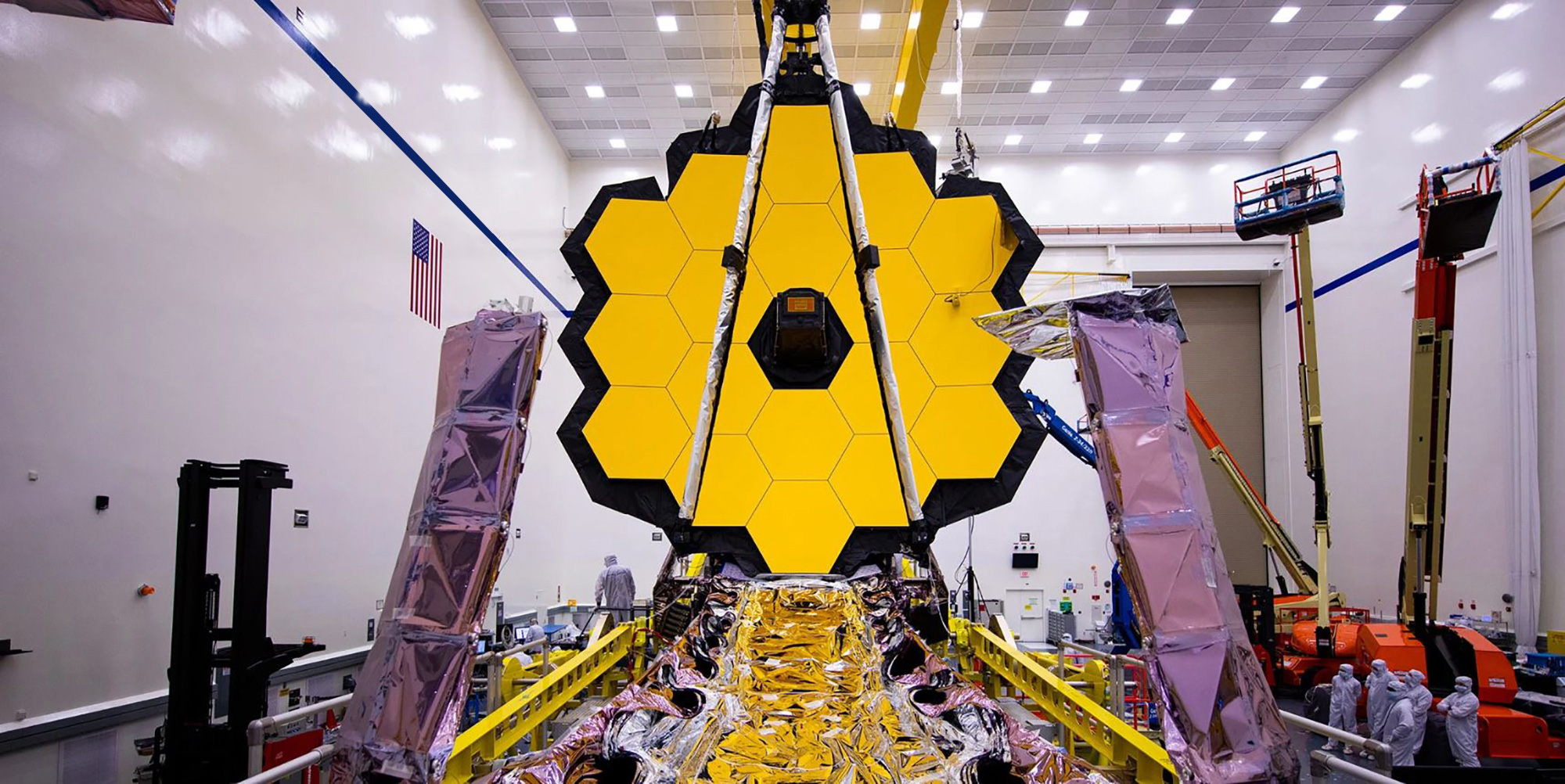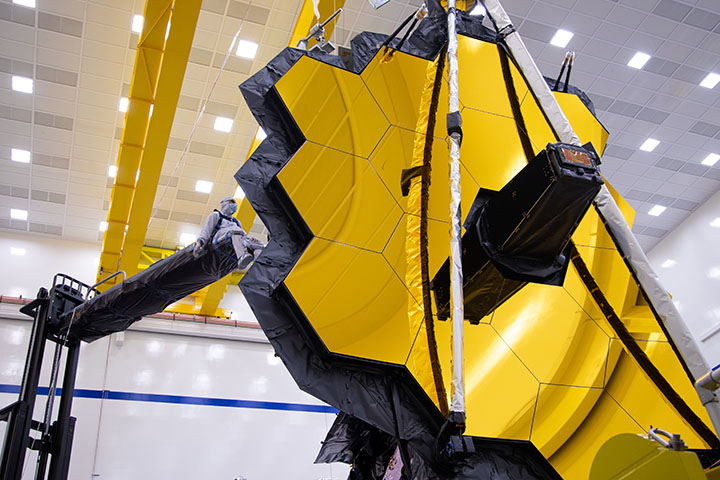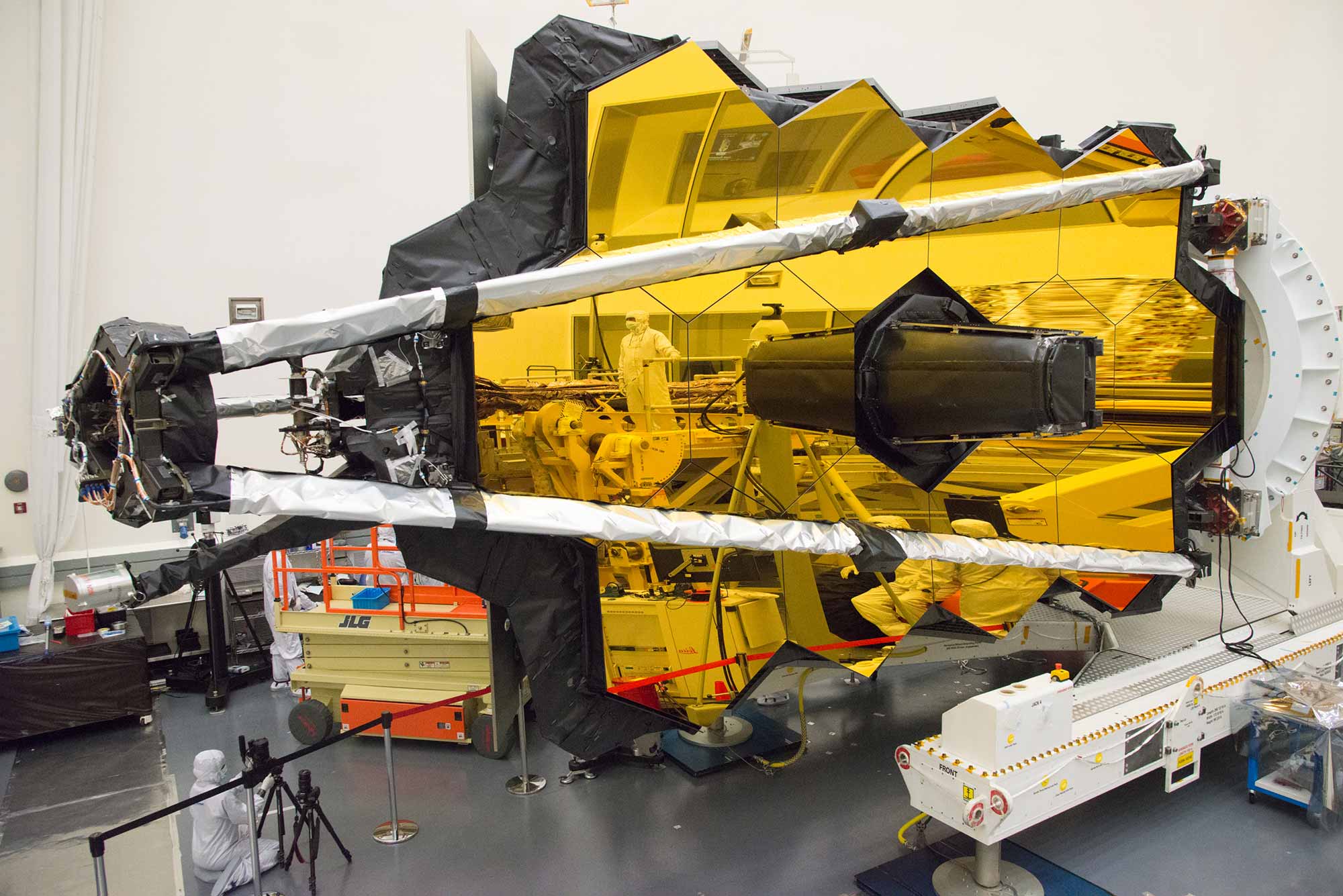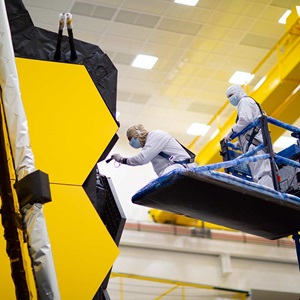The Backplane of NASA’s Webb Telescope Offers a Strong, Steady Hand

By Albert McKeon
In the cold, dark reaches of space, even the most sophisticated and advanced technology could use support.
The James Webb Space Telescope will rely on a support structure that aims to not only carry more than two tons of hardware but also provide much-needed stability as the spacecraft performs precise movements in temperatures colder than minus 400 degrees Fahrenheit. The invention and construction of this "spine," is known as the Primary Mirror Backplane Support Structure (PMBSS). It’s was one of several years-long projects within a larger project to create the largest, most complex and powerful space telescope ever built.
When NASA launches Webb later this year, it will aim a telescope that's optimized for infrared wavelengths into the depths of distance space to learn more about the first galaxies that formed in the early universe and peer through dusty clouds to see new stars forming and the planetary systems surrounding them being created. It's an ambitious and exciting undertaking that could reshape how we comprehend the universe — all relying on the backplane's strength and steadiness.

A (Heavy) Telescope for the Ages
JWST is enormous and intricate. Its gigantic sunshield base stretches out 69.5 feet by 46.5 feet, just big enough to host a regulation tennis game. And even though it's nearly seven times as big as the Hubble Space Telescope, Webb weighs almost half as much — about 14,300 pounds.
Rather than building a large launcher for Webb, NASA and Northrop Grumman instead created an origami-styled observatory so that it can be neatly folded inside a conventional rocket and then unfolded in space. Webb comprises 18 hexagonal sections that stretch over 21 feet in diameter and work together to form a single mirror. Protecting the mirror from the heat and light of the sun, Earth and moon is the five-layered sunshield.
That accomplishment alone would be enough for Northrop Grumman engineers to hang their hats on, but they developed several technologies that collectively make the telescope exactly the unique instrument that's needed to observe the most distant events in space. Perhaps none of these developments were more important than that of PMBSS.
The backplane will hold the weight of the mirror and carry 5,300 pounds of telescope optics and instruments. PMBSS stands 24 feet tall, is nearly 20 feet wide and weighs 2,180 pounds. As the names suggests, it supports the primary mirror as well as Webb's instruments, the center section and the wing assemblies — which weigh more than 7,300 pounds combined, more than three times the weight of the backplane itself.
Meticulous Development and Testing of the Backplane
For several years, Northrop Grumman engineers focused on creating, testing, assembling and retesting the many pieces that would comprise the backplane.
The first consideration engineers had to make when designing PMBSS was finding an overarching material that "could be light enough but strong enough," said Paul Reynolds, the mechanical design lead on the project. The material also had to meld with many other components of the telescope.
The team settled on M55J, probably "the most common type of carbon fiber out there," according to Charlie Atkinson, chief engineer of the project. Despite its commonness, it was the ideal graphite composite material to form the backplane — as painstakingly long testing would show. "It is used in many high-performance applications including sporting goods and aerospace applications. It really fit our needs," he said. "It had the strength and stiffness characteristics we were looking for."
Working with Alliant Techsystems, the Northrop Grumman team had to create a space-frame architecture that would support the weight of the mirror and telescopic instruments while surviving the heat of launch and the drastic cool-down of space, Reynolds said. They found, through design and testing, that connecting carbon fiber with titanium and invar fittings and interfaces gave the backplane a strength that will hold true even as the dissimilar materials react differently to temperature changes in Earth's atmosphere and space.
Another wrinkle of development and testing was ensuring that while the telescope's 18 mirrors move, the backplane remains steadier than a surgeon's hand, especially because no operating room is as cold as space. The team demonstrated to NASA that PMBSS should not vary more than 38 nanometers — about 1/1,000 the diameter of a human hair — keeping the mirror stable, Atkinson said. To put that into scale, if JWST's mirrors were as large as the distance between New York and Los Angeles, the tolerance error of movement from the backplane could be no more than one inch.

Collaboration is Key
Building the backplane was just one check mark on Northrop Grumman's checklist. Atkinson, Reynolds and their many colleagues attached other elements to the structure, including the mirrors, which was the longest task of the project.
"I always enjoy the work, but even more so I enjoy the challenge," Atkinson recalls. "Between meetings, independent technical reviewers and independent predictions, you'd always get a lot of fun banter about who was right. In the end, there was always a resolution and agreement."
"Collaboration is one of the best parts of the job," he said. "I work with outstanding people. It has been exciting, and I’ve met some of the smartest, best people. It’s enjoyable to come into work and not only deal with the ordinary problem, but solve the unexpected problems working together with colleagues. We put ideas out there and everyone worked together to figure out the best path to take."
Atkinson and Reynolds will be on Webb duty at an operations center at John Hopkins University to watch the launch and work with NASA as the space telescope travels to its observation point a million miles from earth. Once at its destination, Webb will need six months to cool down and have its instruments calibrated before the telescope can unfold and look off into the the far reaches of deep space.
"I'll occasionally hearken back and think, 'Wow that was amazing what we were able to do," Atkinson said. "But the backplane was just one amazing development. There were nine other technologies that were developed to enable Webb, 10 inventions overall. I'll sometimes think about all of that — how we put it all together."
More Innovation Stories
Read all stories about advanced technology and innovation >>


